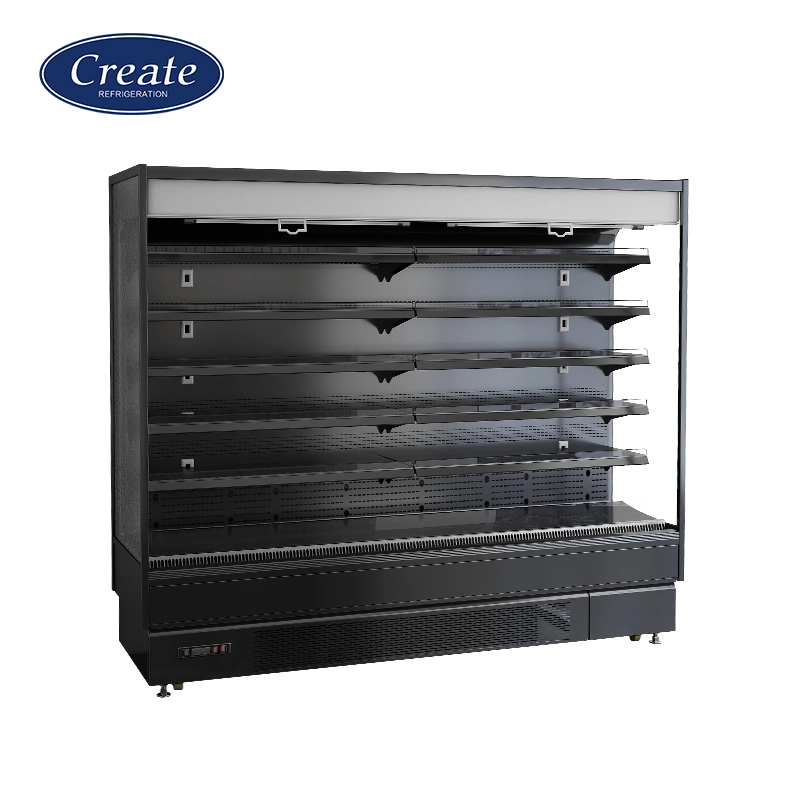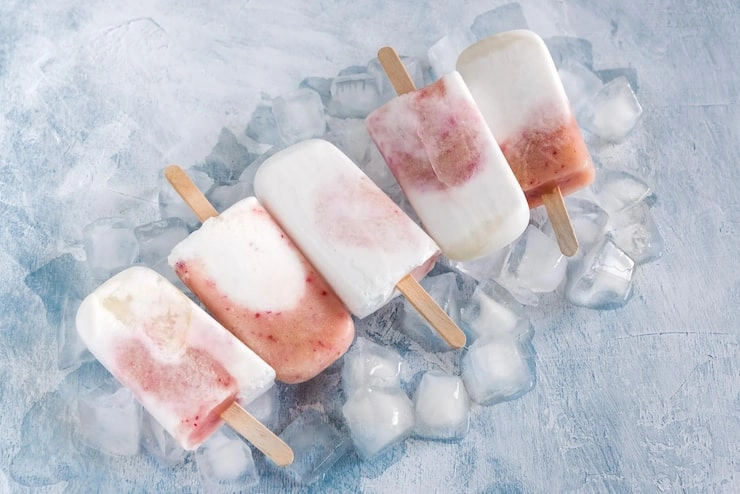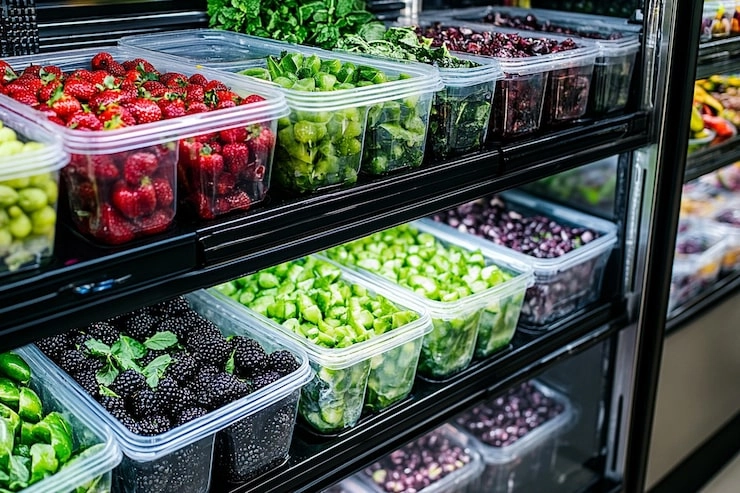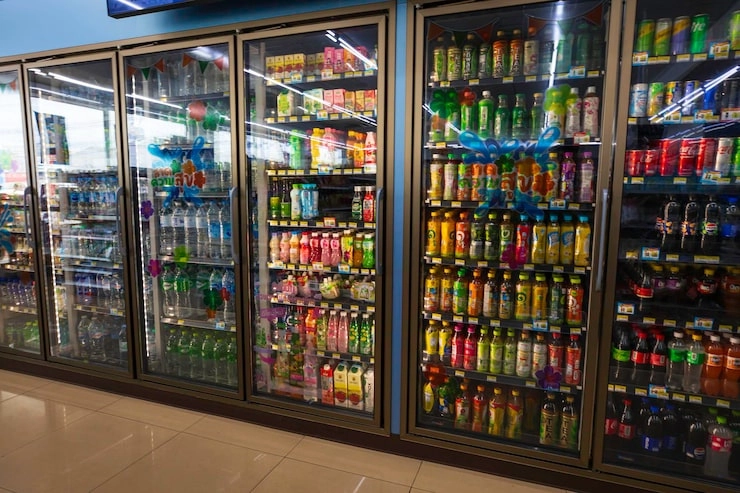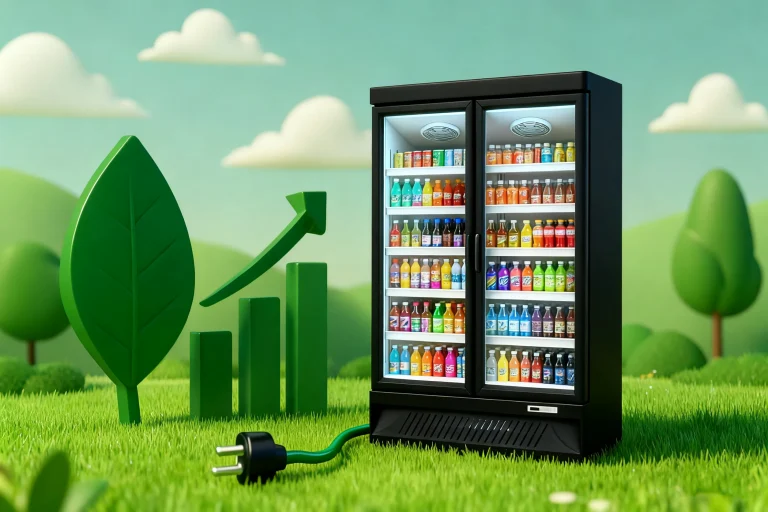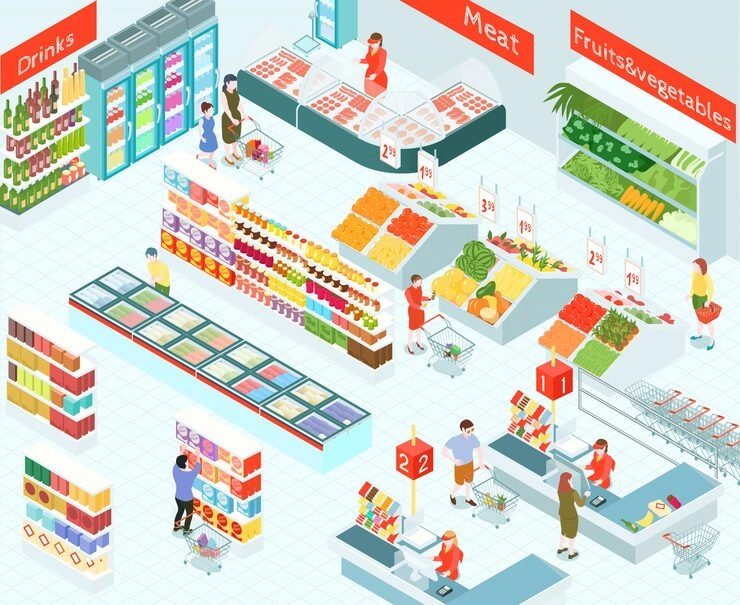Picking the right cooling system is a big choice for businesses in food shops, restaurants, or small markets. Whether you run a grocery store, a snack bar, or a gas station shop, your cooling setup changes how fresh your products stay, how much you spend on energy, and how happy your customers feel. Many things affect this choice. These include how big your space is, how much money you have, your goal to save energy, and how much upkeep you want to handle. To find the best fit, businesses must look at the good and bad sides of each system.
Overview of Plug-In (Self-Contained) Cooling Systems
Plug-in cooling units are all-in-one systems. They hold all main parts, like the evaporator and condenser, inside one box. These units act like fridges you have at home. You just plug them into a wall outlet, and they start working.
Typical Uses: Plug-in units are common in small shops, bakeries, snack bars, and tiny grocery stores. They’re easy to move and set up. This makes them great for places with little room or short-term setups, like pop-up stands.
Advantages of Plug-In Systems:
- Easy Setup and Movement: Plug-in units are simple to install. You can move them around easily. They don’t need tricky setups. This lets you change your store’s layout without much trouble. For example, you can shift a display case to make room for a new product.
- Cheaper at First: Plug-in models cost less to buy and set up. They don’t need pipes or fancy installation work. This is great for new businesses or ones with small budgets.
- Perfect for Tiny Spaces: Their small size and built-in parts make them good for little stores. They also work well in places where you can’t have permanent setups, like rented spaces.
Drawbacks of Plug-In Units:
- Heat and Sound in the Store: All parts are inside the unit. So, plug-in systems let out heat and noise right into your shop. This heat can make the store warmer. It might make your air conditioner work harder. The noise could bother customers who want a quiet place to shop.
- Upkeep Issues: Day-to-day care is easy. But fixing big problems can be hard. Getting to the inside parts isn’t simple. If something breaks badly, you might need to shut down the whole unit or get a new one.
Overview of Remote Cooling Systems
Remote cooling systems split up their parts. The heat-making pieces, like the condenser and compressor, go outside the building or in a special room. The evaporator stays inside the display case.
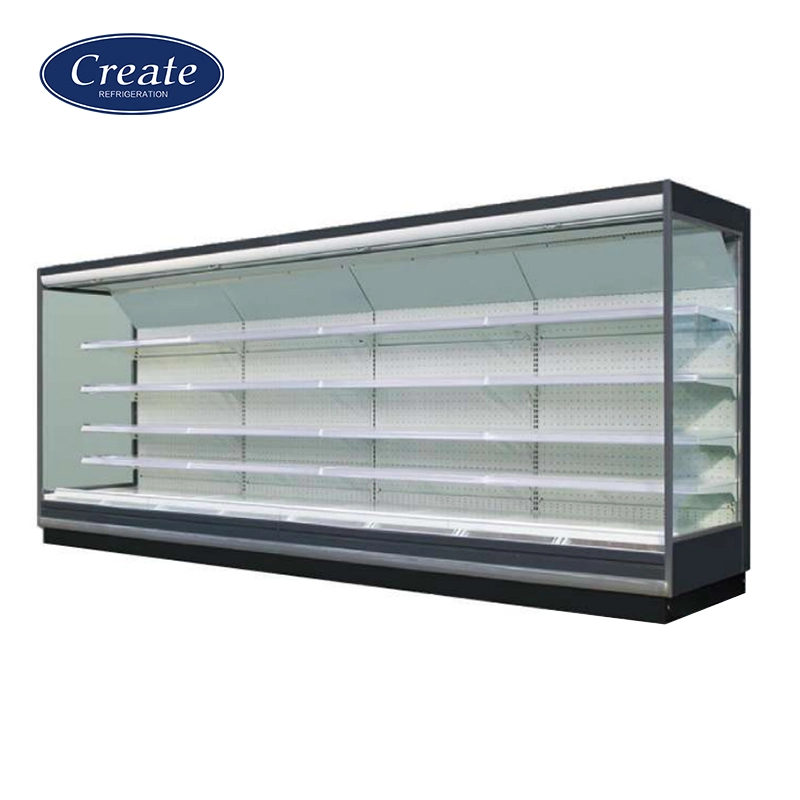
Common Uses: Remote systems are common in big grocery stores, huge markets, and large chain shops. They’re good for cooling many display cases at once. Fancy food shops also like them because they keep the store quiet and nice for customers.
Advantages of Remote Systems:
- Less Heat and Noise in the Shop: By putting the loud, hot parts outside, remote systems make the store cooler and quieter. This makes shopping more pleasant. It also means your air conditioner doesn’t have to work as hard.
- Better Cooling and Energy Use: Remote systems keep temperatures steady. They often save more energy. The outside unit can be placed where air flows well and it’s cooler. This helps it work better.
- Great for Big Setups: These systems can grow with your business. You can connect many display cases to one strong outside unit. This is perfect for large stores or ones planning to get bigger.
Drawbacks of Remote Systems:
- More Money to Start: Remote systems need expert setup. This includes pipes for refrigerant, drainage, and electrical work. All this makes them cost more at first than plug-in units.
- Need for Expert Care: These systems are complicated. You’ll need trained people to fix or maintain them. This can mean higher costs over time.
Comparing Key Factors
| Factor | Plug-In (Self-Contained) Systems | Remote Systems |
| Performance | Okay for single units. Cooling may change in busy shops. | Very steady cooling for many units. Great for heavy use. |
| Flexibility | Super flexible. Easy to move and change store setups. | Not very flexible. Fixed setups need lots of planning. |
| Energy Use | Less energy-saving because of heat in the shop. | Saves more energy, especially in big setups. |
| Space Use | Takes up space inside the display case. | Gives more room for products in the case. |
| Starting Cost | Cheaper to buy and set up. | Costs more for equipment and setup. |
| Long-Term Value | Good for short-term or small budgets. | Saves more money over time because it’s efficient and lasts longer. |
Highlighting Create Refrigeration as Your Trusted Supplier
As a top maker of commercial cooling in China, Shandong Create Refrigeration Co., Ltd offers both plug-in and remote units made for businesses worldwide.
A Focus on Quality and Green Living
Create Refrigeration makes safe, energy-saving, and earth-friendly cooling units. We use green technology, like R290 refrigerants and new materials that save energy. This makes our products work better and helps the planet.
Overview of Product Offerings
We have a big range of products. These include open multideck chillers, glass-door coolers, island freezers, and fresh meat cases. All our main products, like jumbo island freezers and horizontal display cases, come in plug-in or remote styles to fit any need. Features like self-closing glass doors keep temperatures steady. Special lights for fresh meat make products look better to customers.
Customization and OEM/ODM Services
We’re great at making custom solutions. Our expert design team can use your CAD drawings to make 3D models of your store layout. We also take OEM/ODM orders, letting you add your own branding and packaging.
Global Certifications and Quality Assurance
Our products meet tough global rules, like CE, ETL, UL, ROHS, CB, and IEC standards. This means they’re safe and reliable anywhere. We give a one-year warranty for worry-free use and support after you buy.
FAQs
Q1: Which is better: a plug-in or remote cooling system?
A: It depends on what your business needs. Plug-in units are great for small shops, businesses that need to move things around, or those with less money to spend at first. Remote systems are better for big stores that need steady cooling and a quiet, customer-friendly space.
Q2: Can I change from a plug-in to a remote system later?
A: Yes, but it’s a big change. You’ll need to add pipes and do electrical work. If you think your business will grow fast, starting with a remote system might save money in the long run.
Q3: Are Create Refrigeration’s products okay for use worldwide?
A: Yes. Our products have certifications like CE, ETL, UL, and ROHS. These make sure they meet safety and quality rules in major markets around the world.

